|
|
 |
Red Velvet Preliminary Research Project:
Prepare four batches—"samples"—of crust:
4 oz. semi-sweet chocolate, melted
1 1/3 tablespoons cocoa powder
1 cup (8 oz.) lowfat cottage cheese, whipped, no salt added
3/8 cup sugar
1 teaspoon vanilla
1 teaspoon lemon juice
2.2 oz. Bran Buds, ground up
Prepare beet puree (such as in a blender) by using a can or cans of no-salt-added
red beets (such as sliced). Use the entire contents, including the water.
To each of the above samples, add this puree, as follows:
Sample 1: 1/4 cup
Sample 2: 1/2 cup
Sample 3: 3/4 cup
Sample 4: 1 cup
Recommended: Add this puree, before the Bran Buds, into each of these
batches.
Bake at 350 degrees for the approximate durations as follows:
Sample 1: 20 minutes.
Sample 2: 25 minutes.
Sample 3: 30 minutes.
Sample 4: 35 minutes.
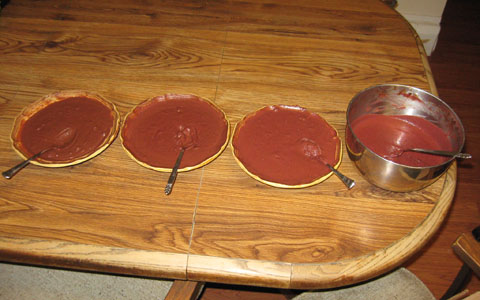
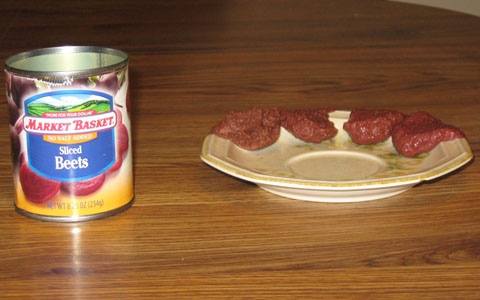
(Crust mixtures shown left-to-right in ascending order, i.e., from Sample
1 to Sample 4)
Red Velvet Secondary Research Project:
4 oz. semi-sweet chocolate
1 1/3 tablespoons cocoa powder
1 cup (8 oz.) cottage cheese
3/8 cup sugar
1 teaspoon lemon juice
1 teaspoon vanilla
2.2 oz. Bran Buds
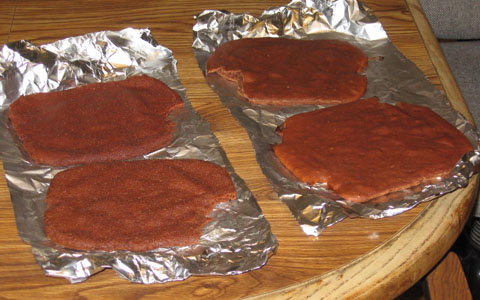
(Note: If these samples appear red enough, that's due to camera and/or
video display issues—don't let that fool you. In real life these crust
variants were much browner. Perhaps the cause of this photographically red
bias is the same thing leading to "red-eye" problems with digital
cameras? This picture was taken with a Canon PowerShot A570 IS, and I did not
bother using Adobe Photoshop to manipulate the colors. I will have to admit,
however, that the colors of these samples were surprisingly close to those
of dark red bricks on my house's extrerior.)
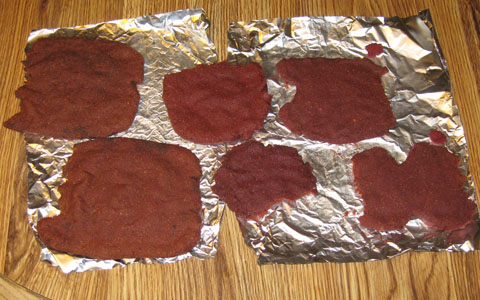
Variants pictured clockwise, starting from upper-left: 7 (very remote
chance this might have been 8), 16, 19 (still warm, with tiny corresponding
unbaked sample to its upper-right), 20 (still warm, with tiny corresponding
unbaked sample to its upper-right), 17, 8 (very remote chance this might
have been 7).
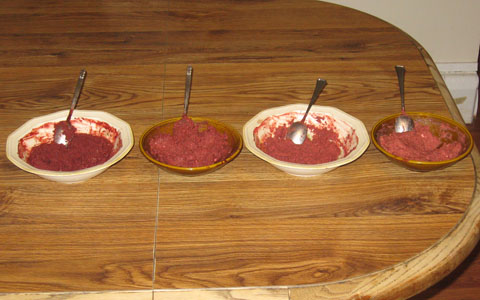
Variants pictured left-to-right: 21, 22, 23, 24—all before baking.
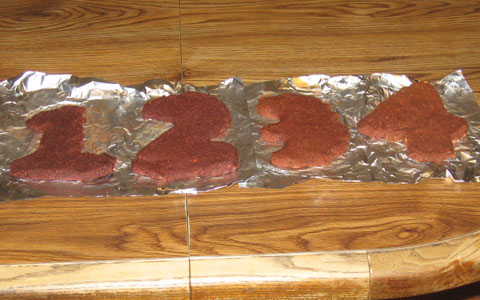
Variants pictured left-to-right: 21, 22, 23, 24—all after baking. Note that
in order to keep better track of my variants, I have shaped each of them
into a numeral. In this case, each of these denotes the units
(rightmost) digit of its corresponding variant number.
|
|

|